












Hello, it´s Mark Nolan with the latest edition of the N332 magazine.
Summer is pretty much here now, so we have the first special traffic operation for the last weekend in June, and then we have other operations throughout the summer, usually in a two-week timescale, before operation return at the end of the season.
At the start of summer, we have traffic leaving the inland areas to come to the coast, mostly, and at the end of summer, they go back. In between, for those twoweek cycles, we get more coming and going in both directions.
In addition, of course it means the coastal areas are busier than normal throughout.
In this edition, we have our sections from our partners, Coys Rent a Car, Ibex Insurance, The Leader, and Quironsalud, and Car Registrations Spain, as well as our partners at This is Torrevieja and SpanishVida.
Remember, we have a huge catalogue of articles on the website, n332.es, which has been recently upgraded by the way to make it easier to navigate, and faster, and you can pick up The Leader every Monday, not forgetting the information on the Facebook page.
If you have any questions you can always email news@n332.es, and whereas we can´t guarantee we will reply to all questions because of the volume we receive, we will try and create future articles around your doubts to answer as many questions as we can for the benefit of all.
Finally, at the bottom of the website, you can find links to all of the official and live traffic information sites, so make sure you check before you travel.
For now, stay safe, and see you out and about.
Mark
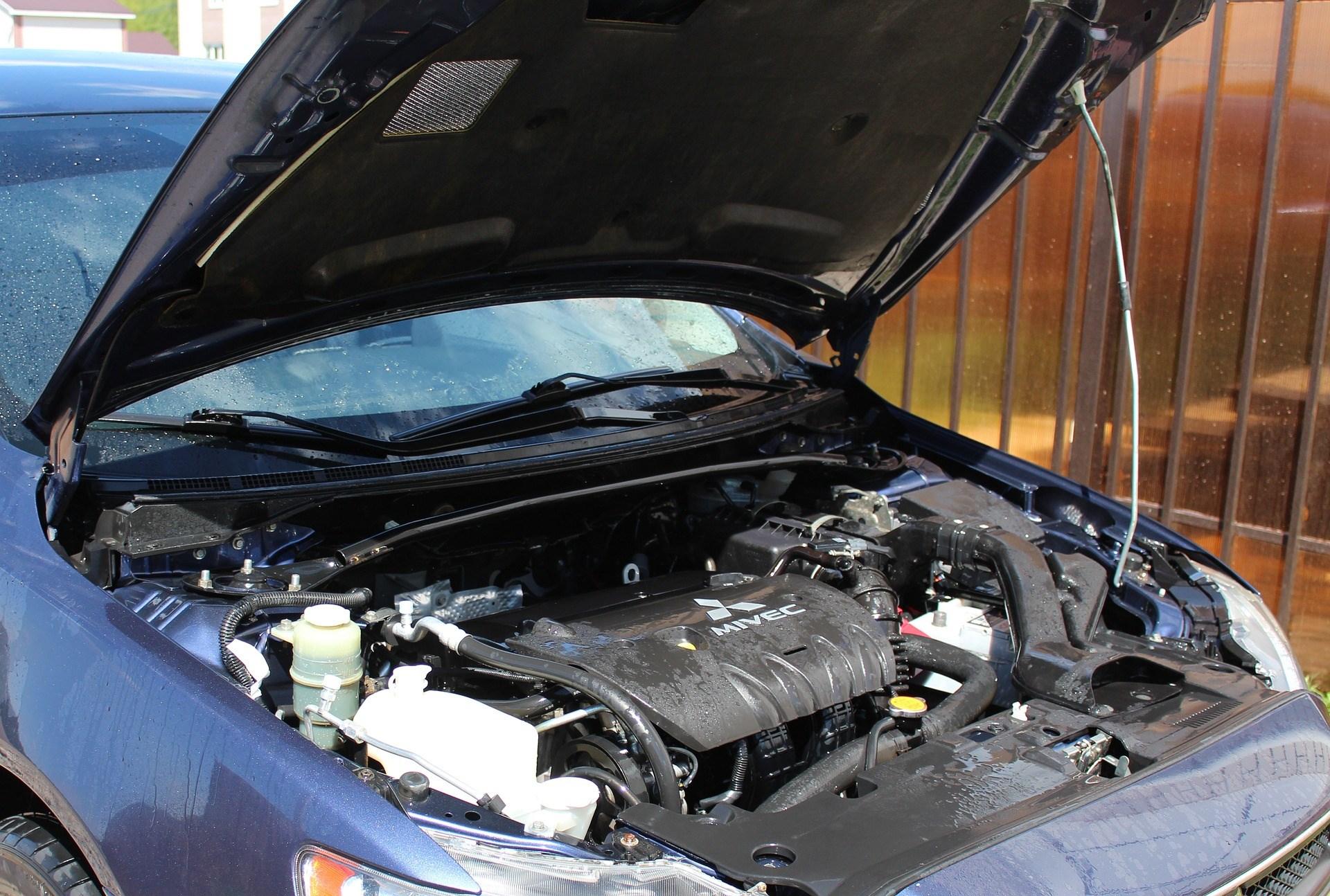
Please don´t copy any part of this publication because it is protected by copyright law.
Copyright © 2023 Mark Nolan
All rights reserved. No part of this publication may be reproduced, distributed, or transmitted in any form or by any means, including photocopying, recording, or other electronic or mechanical methods, without the prior written permission of the publisher, except in the case of brief quotations embodied in critical reviews and certain other non-commercial uses permitted by copyright law. For permission requests, write to the publisher, addressed “Attention: Permissions Coordinator,” to the email address, news@n332.es.



As the summer season is set to get underway, the flow of traffic will start to intensify from this weekend, as many inland residents take to the roads for the start of their summer holidays.
To reduce the problems, you should avoid traveling during unfavourable and very unfavourable hours. The worst traffic times for the days on which this Special Operation “1st Summer Operation – 2024” will take place will be the following:
The unfavourable hours on Friday will be from 3:00 p.m. to midnight.
The unfavourable hours on Saturday will be from 8 a.m. to 3 p.m.
The unfavourable hours for Sunday will be from 6 p.m. to midnight.
The unfavourable hours for Monday will be from 7 a.m. to 2 p.m.
Friday June 28, 2024
In the early afternoon there will be significant movements of long-distance vehicles that will cause high intensities and traffic problems in the EXIT direction of the large urban centres and also on the main access roads to the coastal, and tourist areas, these becoming more accentuated as the afternoon progresses and in the late afternoon-evening in the destination areas.
To these outward movements, there will also be outbound movements at the beginning of the weekend, mainly to coastal areas and second homes.
Exits from large urban centres and access to coastal tourist areas will be conflictive in the afternoon.
For this reason, on this day, during the afternoon and evening, traffic planning and regulation measures will be installed to facilitate the circulation of vehicles in the most conflictive areas.
The unfavourable hours on Friday will be from 3:00 p.m. to midnight.
Saturday June 29, 2024
From the early hours of the morning, intense traffic will continue in the EXIT direction of the large urban centres and on access roads to the coast, with high traffic in-




tensities and traffic jams, until late in the morning in the destination areas.
Traffic regulation and management measures will be implemented during the morning to facilitate the exit of vehicles from large urban centres and access to the coast and beach areas.
The unfavourable hours on Saturday will be from 8 a.m. to 3 p.m.
The access roads to the coast, beaches and coastal areas will be problematic in the morning, and in the afternoon the RETURN of those who have enjoyed the weekend will begin, with high traffic intensities and circulation problems on the main communication roads that channel all the return movement from the beach areas and second homes, towards the accesses of the large urban centres.
On this day, traffic planning and regulation measures will be installed during the afternoon and evening to encourage the entry of vehicles into large urban centres.
The unfavourable hours for Sunday will be from 6 p.m. to midnight.
In the early hours of the morning there will be high traffic intensities in the EXIT direction of the large urban centres, due to the beginning on this day of the tourist season for apartments, hotels and places of residence for the month of July. These movements in the outbound direction will be joined by those that usually occur during rush hour for departure/return to large urban centres because it is a working day.
Also, on this holiday day in the month of July, access to the coast and the roads that connect coastal towns with access to beaches will be conflictive in the morning.
The unfavourable hours for Monday will be from 7 a.m. to 2 p.m.
As always during holiday times, you should try to avoid the busiest times, and in any case you should allow extra time for your journey and plan the route ahead of leaving.
You must always abide by traffic laws, including those of speed and patience, and avoid alcohol or drugs in any case if you are driving. The only safe limit is zero.
You should also exercise patience with other road users who may not be aware of the locations they are driving and could make seemingly simple mistakes.
Always check the live traffic situation on the roads, which you can do by following the links on the front page of the N332 Website, near the bottom of the page.




"Alcohol and drugs continue to be one of the main problems for road safety in Spain"
The Minister of the Interior, Fernando Grande-Marlaska, has explained that "alcohol and drugs have been and continue to be one of the main problems for road safety both in our country and throughout Europe", and for that reason the new campaign of the General Directorate of Traffic (DGT) of awareness to avoid incidents on the road will insist on the risks of driving under the effects of these substances.
Grande-Marlaska presented the campaign at an event held at the DGT headquarters, in which he was accompanied by the undersecretary of the Ministry of the Interior, Susana Crisóstomo; the general director of Traffic, Pere Navarro; the director of the Road Safety Observatory, Álvaro Gómez, and the head of the Traffic Group of the Guardia Civil, General Tomás García.
This summer, the DGT campaign once again focuses on alcohol, but emphasises the idea that road safety is a personal decision, that is, a conscious choice that each driv-




er has to make to comply with traffic rules, since that its compliance is the most effective way to avoid road traffic incidents.
The chosen slogan is "The road does not care how much you have drunk. Only zero has zero consequences", a message that appeals to the responsibility of each driver.
"We want to show the real and personal consequences of prohibited driving behaviours that show contempt for the community and we try to highlight that road safety is a decision, that respecting safety rules is a conscious choice that must be made every time," said the minister. "Our obligation is to enforce traffic rules because it is the most effective way to avoid accidents and traffic victims," he added.
One of the reasons that has led the General Directorate of Traffic to focus the campaign on this very specific message is that alcohol is still the second cause of fatal incidents in our country, with 29 percent of deaths, only behind of distractions, with 31, and ahead of speed, with 23 percent.
In order for the campaign to reach the largest possible number of citizens, a television advertisement has been created, four radio spots that can be heard on the main radio stations in the country, a graphic for printed media and different pieces for digital media and social networks.
The audiovisual piece recreates a typical meal and after-dinner conversation with friends in which one of them, Pablo, in a state of considerable intoxication, decides that it is time to retire. Another of his friends, seeing the drunken state in which he is, tells him that he will give him a ride in his car because he has stopped drinking before. They both get into the car and begin the return trip that ends with the collision with another car in which a family is correctly traveling. A very frequent incident and from which no one is safe.
The radio spots try to banish false myths and beliefs regarding alcohol and driving, such as alternating the intake of water between drinks or not mixing different drinks, all of which are practices incompatible with driving.
A landing page for the campaign has also been created that can be seen at www.dgt.es and in which the citizen, in addition to seeing all the pieces created, will be able to participate in the activity called "Search for your own adventure", where they will be able to choose which character in the ad is going to take the drunk friend home and learn the consequences of that decision.
In addition, the campaign can also be seen throughout the summer in cinema circuits and in some of the advertising elements in the cities.
The Minister of the Interior has also taken advantage of his appearance to denounce that some drivers report the location of alcohol and drug controls through social networks and messaging applications.




"Alcohol and drugs continue to be one of the main problems for road safety in Spain"
"It is an unsupportive and uncivil practice, because this warning will allow a drunk driver to evade control and cause a serious accident at any other point where innocent citizens may be affected," said Grande-Marlaska, who added that it also means "an attack on the waterline of a policy against alcohol while driving that is a basic and fundamental element of road safety policy, because it saves lives."
The Minister of the Interior has asked the DGT to study the best way and means of incorporating the prohibition of this type of warning into our legislation. Countries such as Switzerland and France have already regulated it and included it in their sanctioning rules.
Grande-Marlaska has also influenced the current situation of road safety. So far this year, and until Sunday, April 23, 507 people have died in road incidents, which is 6 percent more than in the same period of the previous year (27 more deaths).
The increase in fatalities is concentrated on motorways, with 29 more deaths, while on conventional roads it remains stable. Likewise, deaths in passenger cars increase, with 24 more deaths and on weekdays (22 more deaths).
These data, despite being better than those of the first quarter, represent a challenge, since July and August are the months of the year in which the greatest number of road trips occur. In the summer of last year, 238 people lost their lives in road incidents and 959 were seriously injured.
Traffic faces these two months with the objective set on motorcycles, since they account for 3 percent of traffic and 25 percent of deaths; in road departures, causing 42 percent of fatal incidents; in road incidents, which represent 11 percent of traffic incidents, and in alcohol, drugs and speed, which continue to be, along with distractions, the main causes of road incidents.




The Provincial Court of Valencia will begin to hear evidence from today, Tuesday, against a man for whom the Prosecutor's Office is requesting five years in prison for two crimes of reckless homicide, since he is accused of driving under the influence of alcohol and drugs and fatally running over two road workers.
The events occurred around 10:30 p.m. on October 19, 2022, when the defendant was driving a vehicle on the AP-7 towards Valencia at high speed, erratically and continually changing lanes.
The Prosecutor's Office reports that, at kilometre 473, in the municipality of Sagunto, the defendant collided with the cones that road maintenance workers were placing at that time, in a duly marked construction area.
His vehicle then hit the back of a van and ran over two of the workers, who died instantly from the injuries caused by the collision.
The public prosecution maintains that the man tested positive for cocaine and alcohol.





According to the OCU consumer association, who are representing car buyers in the cases, the fourth of the class actions filed has been admitted for processing, this time against Opel, Peugeot, Citroen, Fiat, Alfa Romeo, Lancia, Chrysler, Jeep, and Dodge, which will allow the investigation into what is being called an anticompetitive pact.
The anti-competitive practices of the manufacturers by the car cartel clearly harmed users who purchased a vehicle between 2006 and 2013, according to the case submitted by OCU, who were forced to pay a higher price than they were entitled to. The Competitions and Markets watchdog (CNMC) took action on this, sanctioning manufacturers and dealers, and the Supreme Court definitively confirmed these sanctions, opening the door to claims from affected users against this "scam model".
OCU, as a representative consumer organisation, is entitled to propose a collective action in defence of the interests of those affected by the cartel.
The Commercial Court No. 3 of Pontevedra has just admitted the class action lawsuit against the manufacturers of the Opel, Peugeot, Citroen, Fiat, Alfa Romeo, Lancia, Chrysler, Jeep and Dodge brands.
The affected consumers are those who bought cars:
Peugeot, Citröen and Opel between February 2006 and July 2013.
Fiat,Alfa Romeo and Lancia from February 2006 and August 2013.
Chrysler, Jeep and Dodge betweenApril 2008 andAugust 2013.
With this, there are now four lawsuits admitted for processing, since to this are added the one filed against BMW, Ford and Mitsubishi before the Commercial Courts of Valencia, the one admitted by the Commercial Court No. 7 of Barcelona against Honda and Volvo and that of the Commercial Court No. 12 of Barcelona against Lexus, Mercedes, Nissan, and Toyota.
Having been admitted, these courts have concluded that OCU's claims meet the formal and procedural requirements to be able to process them. Now a process begins by which the court informs the defendant brands that they have 20 business days to prepare and present their response to the lawsuit. We have to continue waiting for the next steps of a justice that is slow, but inexorable.
OCU ask for patience from the thousands of affected people who bought vehicles from other brands and are trusting them to help them recover the money they overpaid due to the illicit agreement between manufacturers and dealers.
If you are one of those affected by the anti-competitive price fixing pact, you can still join the action and defend your interests by contacting the OCU.




Operation Summer, included in the package of measures and action plans for the summer period approved this Tuesday by the Council of Ministers, will start on July 1 and the police deployment will extend until August 31 in the autonomous communities of Andalusia, Asturias, Canary Islands, Cantabria, Comunitat Valenciana, Galicia, Madrid and Murcia, while in the case of the Balearic Islands it will be extended until September 30.
In these nine autonomous communities, the National Police will reinforce the staff of its Citizen Security units (which total 22,471 personnel) with 2,724 agents, mostly from the class that has just completed the training process at the National School of Ávila Police, who will be joined by specialists from their animal-based units such as Cavalry, and Canine Guides, among others.
As regards the Guardia Civil, the 41,537 agents assigned to Citizen Security units in the nine communities will be reinforced with another 1,683 troops who, voluntarily, have postponed the enjoyment of their vacations to a period other than the summer.
The delay in the start of the course at the Baeza Academy, which will conclude next September, has made it impossible for reinforcement to be drawn from students who conclude their training period, as in previous years.
This reinforcement makes it possible to increase the number of uniformed personnel in preventive police functions and facilitate their permanent presence in those areas
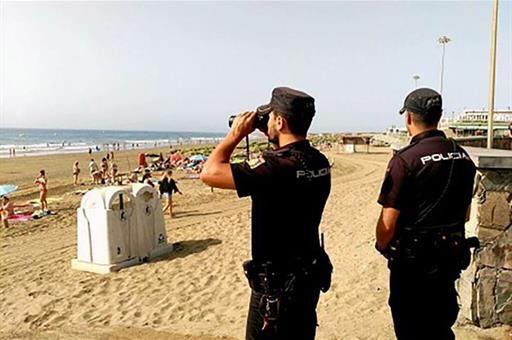




According to data from the National Institute of Statistics, in the first three months of 2024 the number of international tourists who have visited Spain has increased by 17.7% compared to the same period of the previous year, exceeding 16.1 million tourists. The Ministry of the Interior is aware of the economic impact of tourism on the national economy, which is why it plans police operations aimed at providing peace of mind and confidence to national and foreign citizens who choose Spain as a tourist destination.
The police reinforcement planned for this summer will make it possible to increase surveillance and preventive control on urban and interurban communication routes, stations, ports, airports, hotels, beaches, and campsites and at events that involve a large concentration of people.
In addition, it will enhance crime prevention efforts, accelerate investigations by Judicial Police units and streamline and facilitate procedures in reporting offices, shortening waiting times and increasing levels of citizen service.
And all this combined with the measures corresponding to the current reinforced Level 4 anti-terrorist alert established in application of the Anti-terrorist Prevention, Protection and Response Plan. This threat has been consistently set at level 4 for some time.
Added to this Summer Operation is the reinforcement that the Guardia Civil and the National Police will allocate to the surveillance of the Camino de Santiago in their respective areas of territorial deployment.
For its part, the General Directorate of Traffic will launch the Special Traffic Operations Campaign corresponding to the summer of 2024 to improve road safety levels during the summer months, in which incident rates increase, scheduled departure and return dates of vacation periods, weekends and festive dates.
Likewise, the DGT will launch special campaigns in relation to the control of alcohol and drugs, motorcycles and vans, speed, as well as distracted driving. To carry out these activities, the Traffic Group of the Guardia Civil has 5,859 troops, supported by the force's command offices distributed throughout the national territory.




The Guardia Civil Traffic Group celebrated its 65 years on the roads of Spain since its creation in a special event in Madrid.
The Traffic Group of the Guardia Civil was created by virtue of Law 14/1959 regulating traffic powers, with 560 guards in a Spain where one million vehicles circulated on 60,000 kilometres of roads.
The unit was growing in parallel with the increase in the number of vehicles in our country. Currently, it has almost 9,000 officers. The presence of women in the Traffic Group of the Guardia Civil has been increasing significantly in recent years: there are 185 women in management, motorist and traffic positions. In 1991, the first Traffic agents entered the unit, specialising in traffic reports. Two years later, the first female motorcyclist was appointed.
This unit depends on the Operations Command of the Deputy Operational Directorate. It is specialised and specifically conceived, prepared and organised for the exercise of the powers assigned by law to the Guardia Civil in matters of traffic, transportation and safety on interurban roads for public use, crossings, as well as in urban roads where appropriate.
Preferably, it carries out the specific tasks of surveillance, regulation and control of traffic and road safety, as well as land road transport.
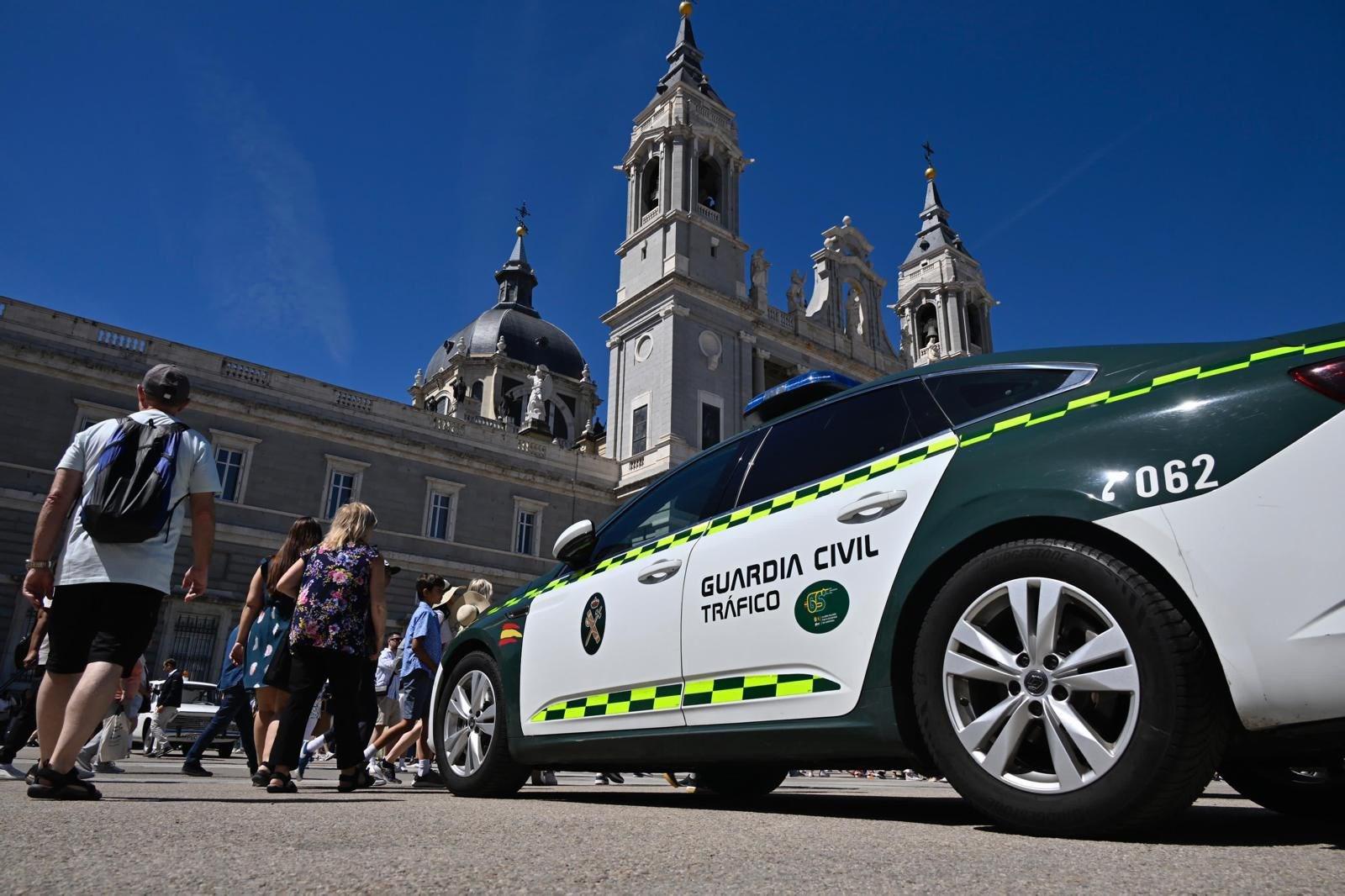

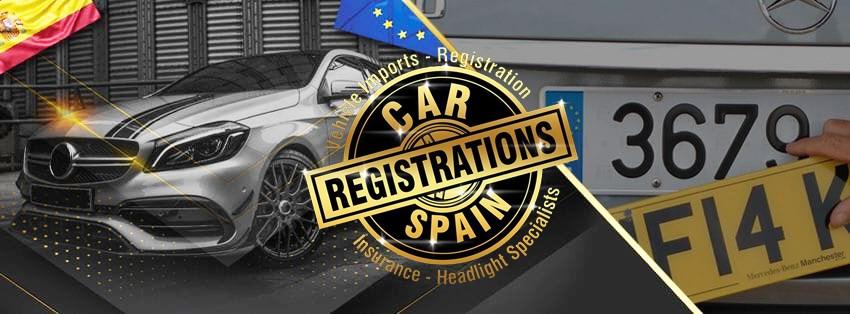
by Car Registrations Spain
Green Plates (or Placas Verdes) are temporary plates that allow you to insure and drive a non-legal foreign vehicle for up to 60 days, irrespective of it’s current MOT or tax status in it’s country of current registration.
Spanish residents can only drive their foreign vehicle in Spain for 30 days, but green plates allow another 60 days on top of this. For non residents it's 6 months but the vehicle must remain taxed, have a current MOT and of course be insured.
If your foreign insurance policy has, or is about to expire, green plates will allow you to get a Spanish insurance policy, without any additional cost when you obtain your new Spanish registration.
No tax on your vehicle means that it cannot be driven here in Spain so Green Plates are a good way to stay legal, allowing you to carry on using your vehicle.
An expired MOT means that your vehicle cannot be driven in Spain and would usually result in your vehicle’s confiscation if stopped by the police or Guardia Civil, but if you have green plates that are within the expiry date, then the MOT status doesn’t matter.


If the worst has happened and your vehicle has been confiscated by the authorities then Green Plates will allow you to get your vehicle out of the pound.
Green Plates offer a seamless and smart solution, ensuring compliance and convenience. Whether your foreign insurance is expiring, your vehicle is untaxed, or your MOT is out of date, Green Plates provide a legal lifeline, preventing potential confiscation and keeping you on the move.
For a limited period Car Registrations Spain are offering FREE green plates for customers that subsequently import their vehicle with us. Simply mention N332 when filling out the quote form.
Car Registrations Spain S.L. is the leading vehicle registration service of pre-registered foreign vehicles in Spain. If you have a foreign registered vehicle that you would like to register on to Spanish plates or think we can be of service, please don’t hesitate to get in touch with a member of our team.
info@car-registrations-spain.com
+34 868 990 576
+44 (0)2380 200 706
https://www.facebook.com/carregistrationsspain/
https://quote.car-registrations-spain.com


by Car Registrations Spain
If you've just arrived in Spain with a UK car that's no longer being used on UK roads then you may be forgiven for thinking that you can SORN your vehicle as you are no longer using it in the UK. However, this is a common mistake...
In order to be able to drive a foreign registered vehicle in Spain it must be legal to be driven in its country of current registration and for a UK car, this means taxed, having a current MOT and of course insured.
If you are stopped by Spanish police or Guardia Civil driving a vehicle that is SORN in the UK, then you risk a fine and possible vehicle confiscation meaning extra expense and complications.
The solution, if you can’t re-tax your vehicle in the UK, is to get temporary import plates, also known as Placas Verdes which allow you to insure and drive your vehicle for up 60 days pending registration on to Spanish plates, or to allow you to get the vehicle back to the UK.

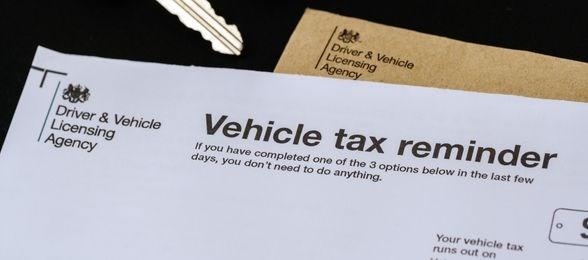
Navigating the legal requirements and paperwork here in Spain can be a daunting proposition. At Car Registrations Spain, we understand the complexities involved in registering foreign vehicles onto Spanish plates. Our team of experts is here to offer you tailored assistance, ensuring a smooth and compliant transition to Spanish registration. From handling the necessary documentation and inspections to advising on taxes and fees, we are committed to providing you with a hassle-free service.
Car Registrations Spain S.L. is the leading vehicle registration service of pre-registered foreign vehicles in Spain. If you have a foreign registered vehicle that you would like to register on to Spanish plates or think we can be of service, please don’t hesitate to get in touch with a member of our team.
info@car-registrations-spain.com
+34 868 990 576
+44 (0)2380 200 706
https://www.facebook.com/carregistrationsspain/
https://quote.car-registrations-spain.com

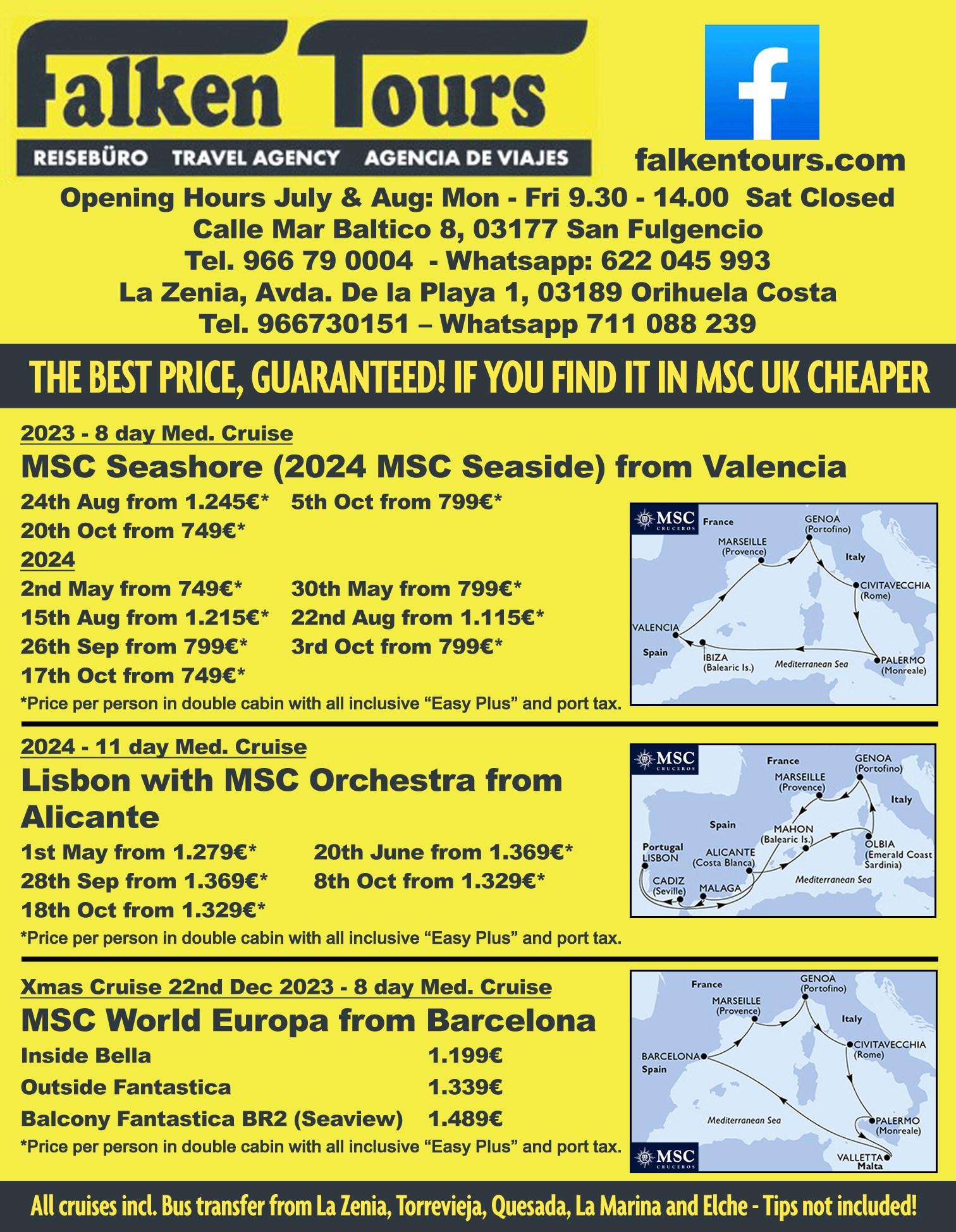

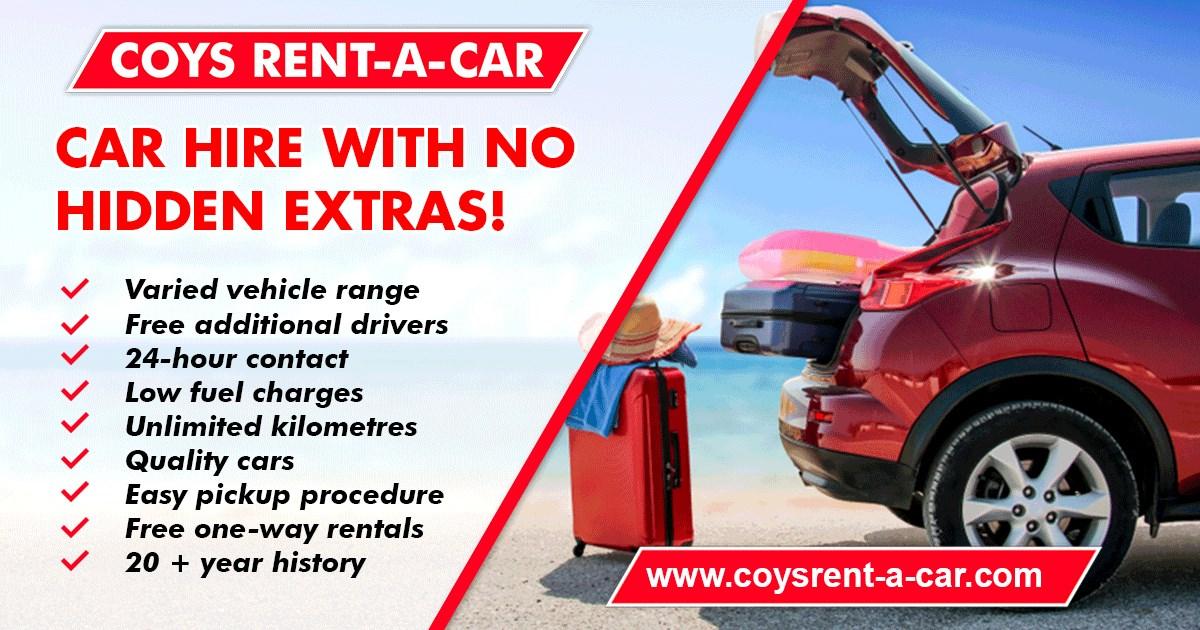


Surely you have found yourself in this situation at some point. You are approaching a traffic light and just before passing it the green light changes to yellow or amber. In a few seconds generally drivers decide to accelerate before it turns red, although you should never accelerate towards a hazard, and risk a possible fine or, after checking that there is no other vehicle too close, brake safely.
But the question is, can you be fined for driving through the yellow light?
Well, the first thing we are going to do is go to article 146 of the General Traffic Regulations, which is where the operation of “circular traffic lights for vehicles” is specified. This is where we find the two possible assumptions that we must take into account, because with one we can be fined and with the other we cannot.
“A flashing yellow light or two alternately flashing yellow lights force drivers to exercise extreme caution and, where appropriate, give way. Furthermore, they do not exempt from compliance with other signs that require stopping.”
“A steady yellow light means that vehicles must stop under the same conditions as if it were a steady red light, unless, when it is turned on, the vehicle is so close to the stopping point that it cannot stop before the traffic light in sufficient safety conditions.”
Therefore, if we encounter the first case in which the traffic light intermittently shows the yellow or amber light, what we should do is reduce speed and check our surroundings, because it is probably enabled for pedestrians to cross the road. Remember, the rule says, “give way” and so pedestrians in this situation have priority. The light can also be used to warn of other reasons such as construction work.
But if it is fixed, we must act as if it were red, with the exception indicated above. If you do not heed this warning, the regulations indicate that it will entail a fine of 200 euro and the withdrawal of four points from your licence.
The excuse of not being able to stop must be quantifiable however, you cannot just drive through the yellow light and hope that you can use that get out without just reason.



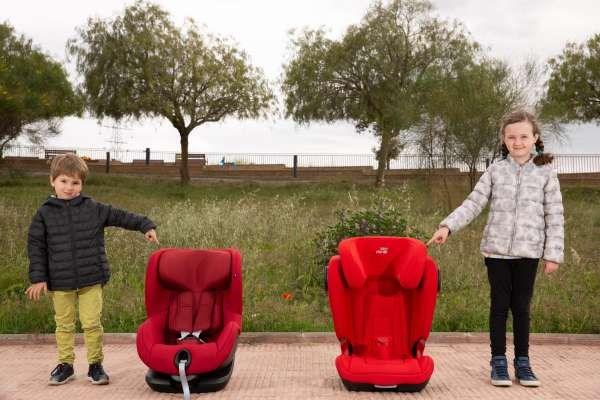
The summer holidays are about to begin, and that means many families taking to the road, sometimes for a road trip holiday, sometimes just at a holiday destination, but it is important to remember that the rules of the road may differ from country to country, and in Spain, one rule that differs to other locations in the protection of children in cars.
In Spain, children measuring 135 cm in height or less must ride in the rear seats of a vehicle, irrespective of their age, and must sit in the correct and approved seat appropriate to their size and weight.
The only exceptions to this are if the vehicle doesn’t have rear seats, or the rear seats are already occupied by other children.
Seat belts must be worn by all vehicle occupants.
The Child Restraint Systems for younger and growing children provide the best protection for a child when on board a vehicle. That is why the law dictates their use, to enforce the maximum protection for children.
The use of child restraint systems reduces injuries by up to 75% in the event of a collision. According to data from the DGT, road
traffic incidents are the leading cause of death amongst children under 14 years of age, and, tragically, 40% of those children who lose their lives wore no protection system, and, according to the statistics, could well be alive today.
The law also requires seats to be of an approved standard. Those which meet the minimum required standards carry an orange label, usually located at the rear, which guarantees that the seat has undergone a series of tests to prove safety and reliability.
The approval system is based on a European standard and EU regulation ECE information is listed on the label.
There are a number of classifications for car seats which are based on the physical characteristics of the child, the most important being weight and come with a guide for age, although remembering that children of the same age can differ greatly in their physical characteristics, the age element is just a guide.
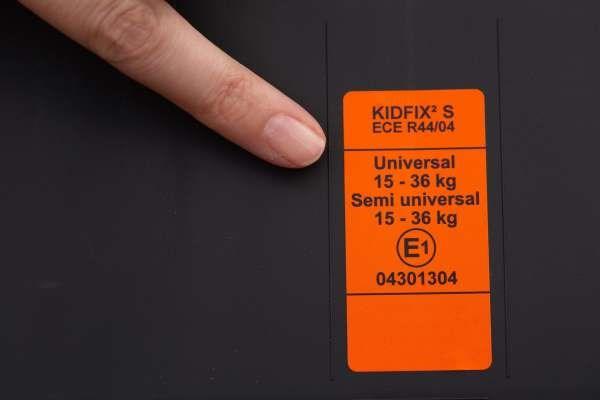

In Spain, it is mandatory to display certain stickers on the vehicle in certain circumstances, such as the ITV, Eco Sticker, or Car Share badge, but whereas these stickers are displayed in the windscreen, failure to do so resulting in a fine, stickers on the rear of vehicles are also quite common, and most of them also have a meaning.
Firstly, before we get to the fun part, the DGT establishes by regulation is that " the glass surface of the vehicle must allow, in any case, clear visibility for the driver over the entire road on which it circulates, without interference from sheets or adhesives", and so if you have unnecessary stickers in the window, you are exposing yourself to a potential 200 euro fine.
What we are talking about is stickers which do not interfere with visibility, largely because they are affixed to the metalwork, and often at the rear, which is perfectly fine.
Although, special mention to the number plate and lights, because you cannot interfere with these either.
Now, we will explain some of the most popular stickers you will see on the back of vehicles, although there are many more.
Typically identified as a symbol of Spain, and is often seen by the roadside on billboards, and although the bull is associated with Spain through various activities, the popularity of the symbolism came about from an advertising campaign. The bull we see at the side of the road was created by Manolo Prieto in 1956 to advertise the Brandy de Jerez produced by the Osborne Group.
The sticker of a black donkey with a white belly, snout and eye is very common, especially in Catalonia, as it refers to a breed of this animal native to Catalonia and the Pyrenees, which was originally a silhouette to raise awareness of the need to protect this species so that it does not become endangered. Today, it is often seen more of a symbol of Catalan nationalism that uses it in opposition to the typical Spanish bull.
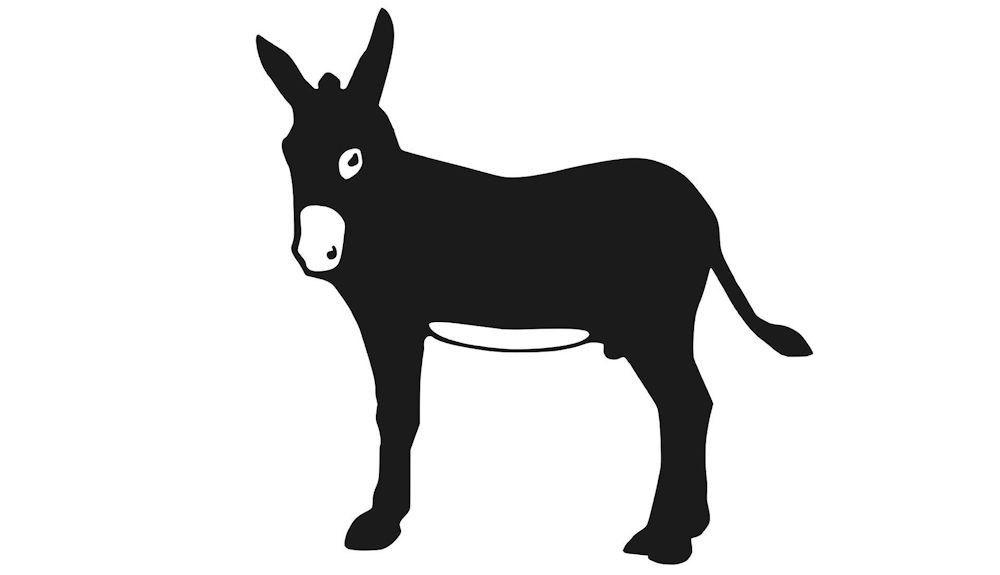

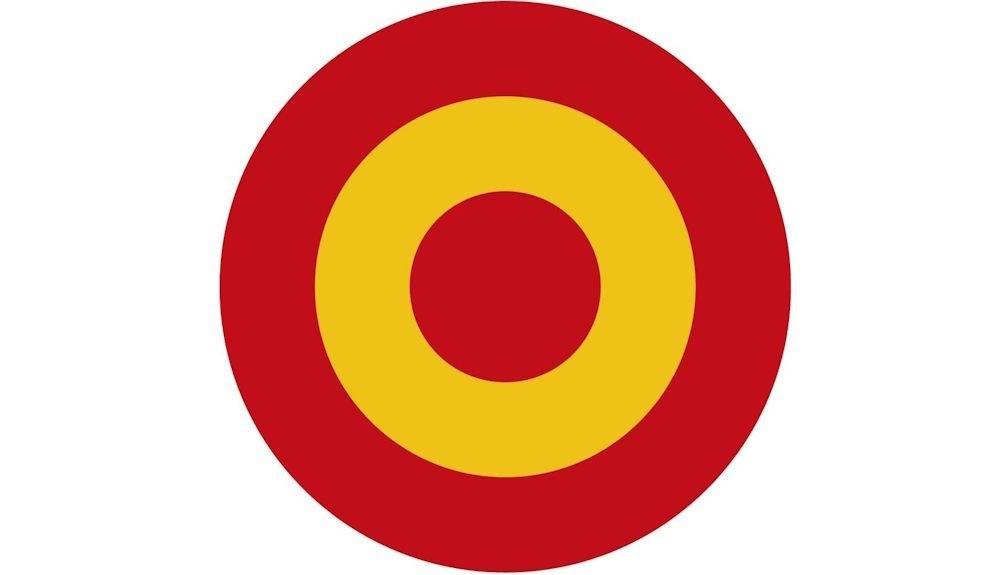
The roundel has also become a symbol of pride in the national identity of Spain. Shaped like a target and with the colours red. and yellow of the flag of Spain. This is the cockade of Spain, a symbol that emerged during the War of Independence and was later closely linked to the military sphere.
One of the most common symbols in some areas is that of a cross, often depicted with the letters A and W hanging from it. It is also known as the Victory Cross, an early 10th century Asturian crux gemmata or jewelled cross, given by King Alfonso III of Asturias, and is seen as a symbol of the area of northern Spain from where natives have often relocated to other parts of the country, bringing their iconography of pride with them.
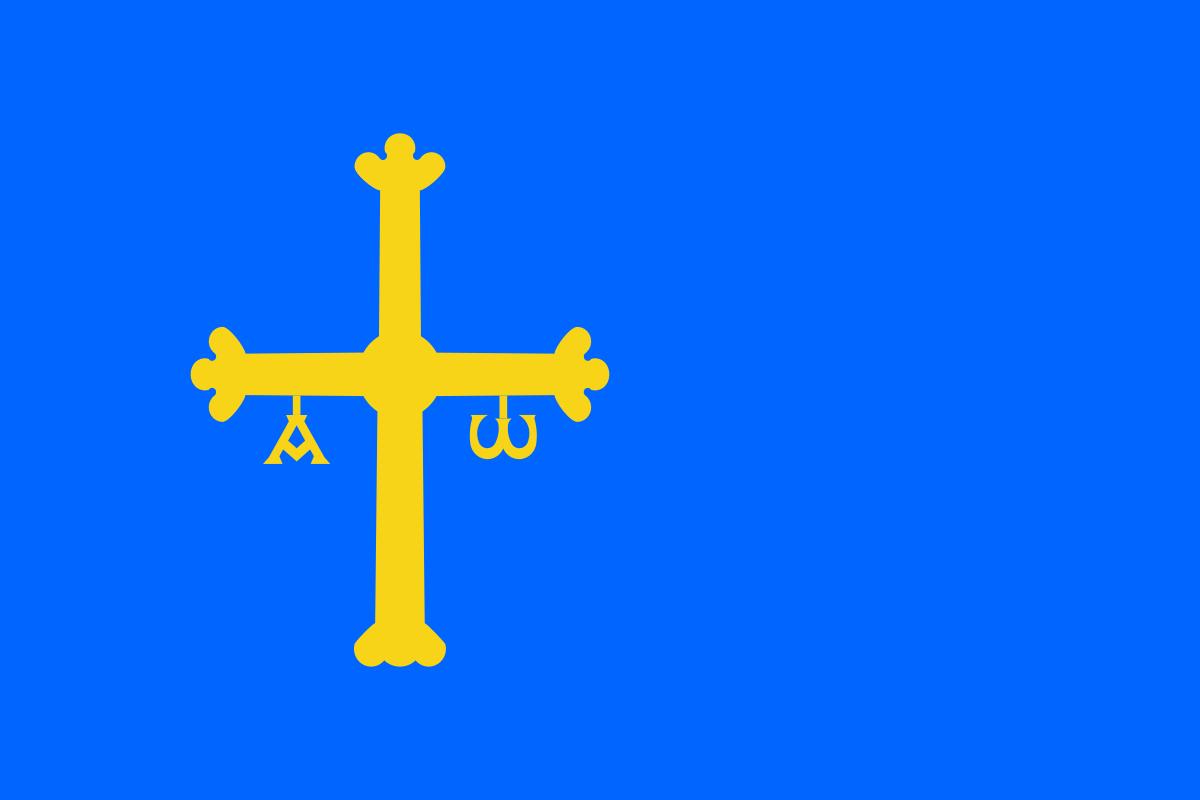
Another of the most common stickers is that of an enigmatic fish that you can see in many rear areas of cars. It is called Ichthys and is actually related to Christianity, so whoever carries it in the car shows their faith and religious beliefs.
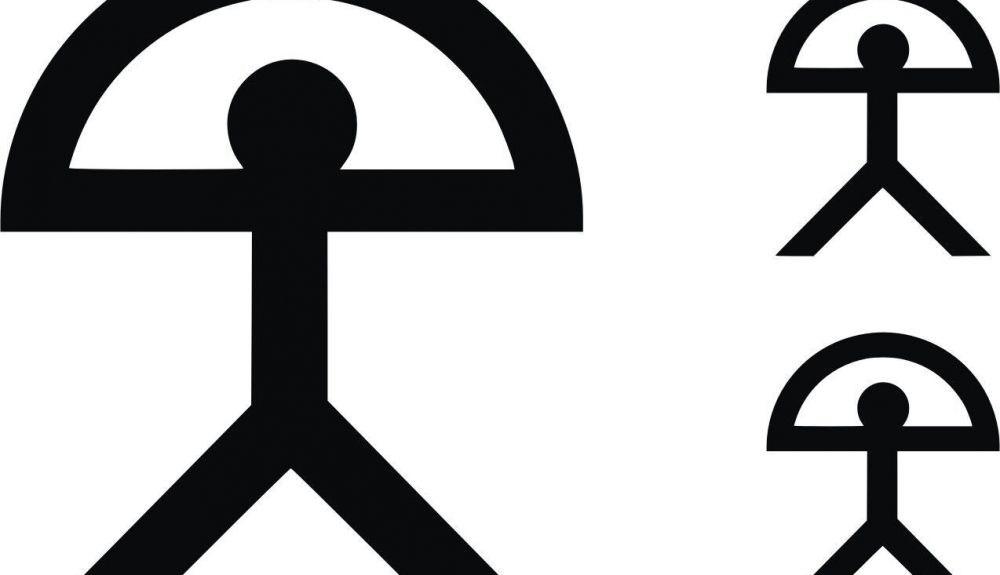
The stickman symbol is especially visible in Andalusia. The Indalo is a regional emblem, a distinctive sign of Almería. Specifically, it was a Neolithic cave painting discovered in the Los Letreros cave in 1968. There are those who see a man hunting with a bow, or those who interpret it as a man with a rainbow as a symbol of protection against evil, but it is an emblem of Almería to represent the province and protect from traffic incidents and

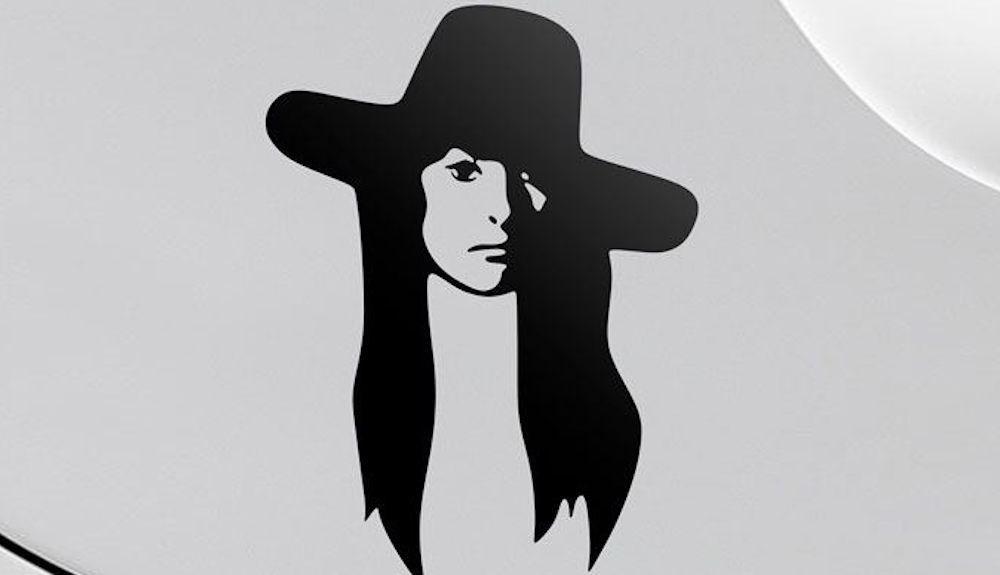
The mysterious woman with a hat, known as Penelope, was the logo of a famous nightclub in Benidorm of the same name. This nightclub became a club of great national recognition, even opening clothing stores. Today it is still open and celebrates themed parties, with this logo, which represents a symbol of leisure and nightlife. In fact, after the Osborne bull, it is the second most sold sticker in Spain today.
There are many others, flowers being one of the most popular we left off the list, and the Man of La Mancha, but these few should give you an insight into some of the reasons these stickers are displayed with pride. Let us know your favourite, or if there is one that has always raised your curiosity.

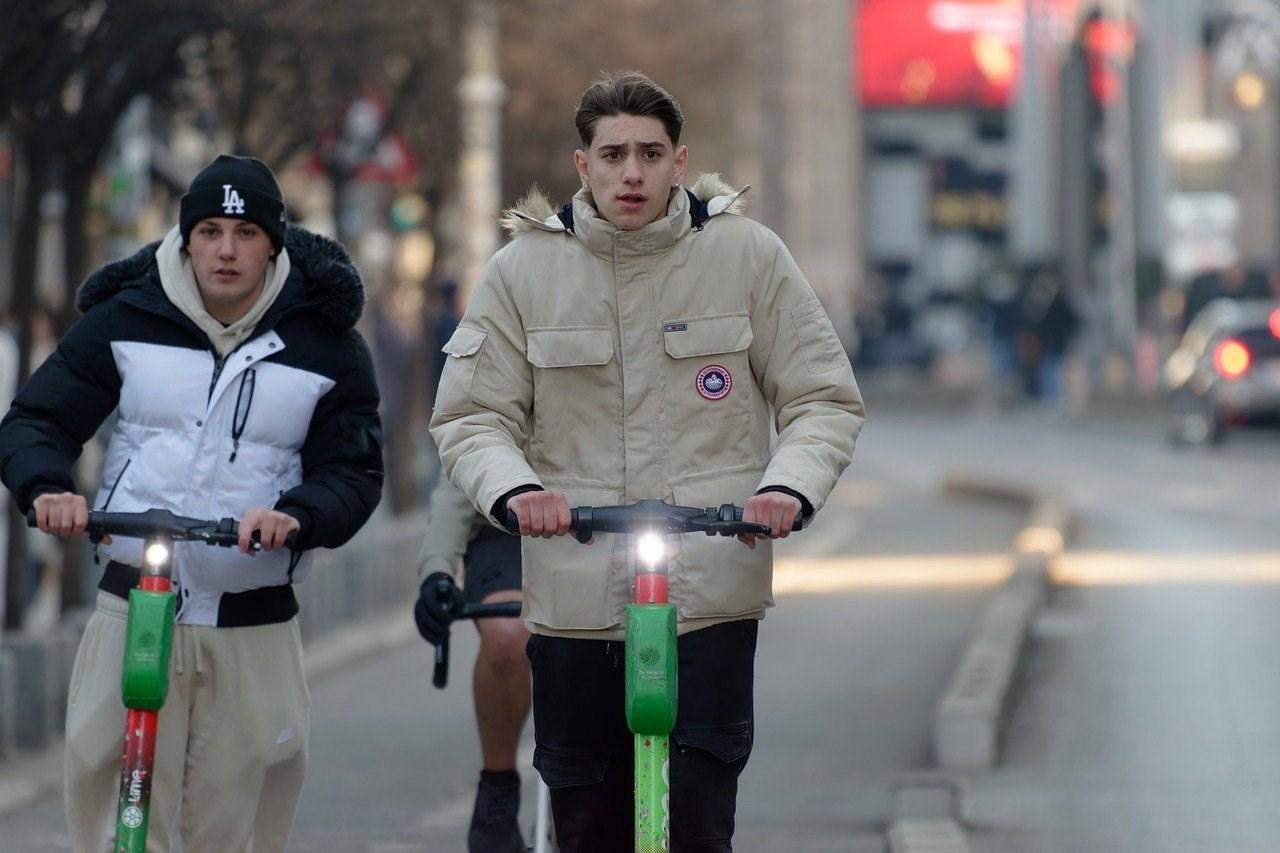
The DGT had been warning of the increase in incidents related to electric scooters, increasing by almost 40% in general terms, and aside from the education campaigns many local police departments are embarking on, enforcement is also playing a part, to which the latest tool in the armoury is a radar speed detector which can be used specifically to monitor e-scooters.
As part of the technical specification to qualify as a Personal Mobility Vehicles (PMV), the vehicle cannot exceed 25 kilometres per hour. Although exceeding this speed is theoretically possible with some of the vehicles for sale in Spain, they must be limited. However, some people have been able to bypass that restriction, and so their vehicles have been adapted to exceed the maximum permitted limit, which is not allowed.
In Malaga, the police have imposed no less than 10,386 fines on electric scooters in the last 5 years, the majority for parking them incorrectly, traveling in pedestrian areas or traveling with 2 or more people, and now the City Council announced that it will also control speed through new mobile radars.
The checks will be carried out at random times and locations, and the driver will be immediately identified and sanctions, with a fine of 200 euro, whether the electric scooter is owned or rented. In addition, in the event that the Local Police verify that the vehicle has been modified, they state that they will immediately seize it for failing to comply with the General Vehicle Regulations.


Big Name Music
Tom Jones –23 July in Marbella,Alicante on 25 July, Chiclana de la Frontera on 28 July,Almeria on 4August.
Pearl Jam – 6 and 8 July in Barcelona.
Garbage – 9 July in Barcelona.
Metallica – 12 and 14 July in Madrid.
James Blunt – Barcelona on 17 July,Alicante on 19 July, Chiclana de la Frontera on 20 July
Simple Minds – 26 July in Granada.
Airshows
The GijonAirshow is on 27 and 28 July.
Sport and Fitness
From 22 June to 14 July the Torrevieja International Cup will take place bringing together a variety of international competitors in various disciplines, including football and rugby.
Other Events
RockArena – San Fulgencio – 20 July.
Torrevieja Habaneras – 70 Anniversary Event – 21 to 27 July.
RBF Torrevieja 2024 - Reggaeton Beach Festival – 3 and 4August.
Brilla Torrevieja – 27 July to 12August.
Check with your Local Tourist Information Office
As you might expect, this is not a complete list of events, as there are far too many to put in brief, but they are a hand-picked selection of the most popular or interesting.
For more events in your area, check with your local tourist information office, and for the Torrevieja area, visit thisistorrevieja.com



We should all be aware that the ITV inspection (Inspección Técnica de Vehículos) is mandatory once a vehicle reaches a certain age, and must then be renewed periodically, and not doing so can result in a hefty fine, or worse, but a problem has arisen in some areas where ITV test centres are located in Low Emissions Zones (ZBE).
In some areas, such as Torrelavega and Santander, for example, the ITV centre is located in a ZBE, which would mean that certain vehicles are prohibited from entering, and therefore unable to visit the local centre to have the test carried out.
It is worth noting that you can attend any ITV centre across the country for the test, irrespective of where you live, but convenience often leads people to their closest centre.
Entering a ZBE without the corresponding sticker can lead to a 200 euro fine, and so for some of those whose vehicles are not suitable, it became a problem.
That is why the General Directorate of Traffic (DGT) has decided to regulate this matter and has updated instruction MOV 2023/20 to offer recommendations when “establishing moratoriums, exemptions and authorisations in vehicle access” to the ZBE.
The document details the types of vehicles to which municipal officials could apply the exceptions, expressly citing those that, “go to ITV stations that are located within the ZBE to pass the mandatory technical inspection (ITV) or to legalise reforms.”
The updating of this instruction has been promoted by the AECA-ITV station association, but it is important to keep in mind that it is only a recommendation, so councils are not obliged to follow it, so you still need to check before you proceed.

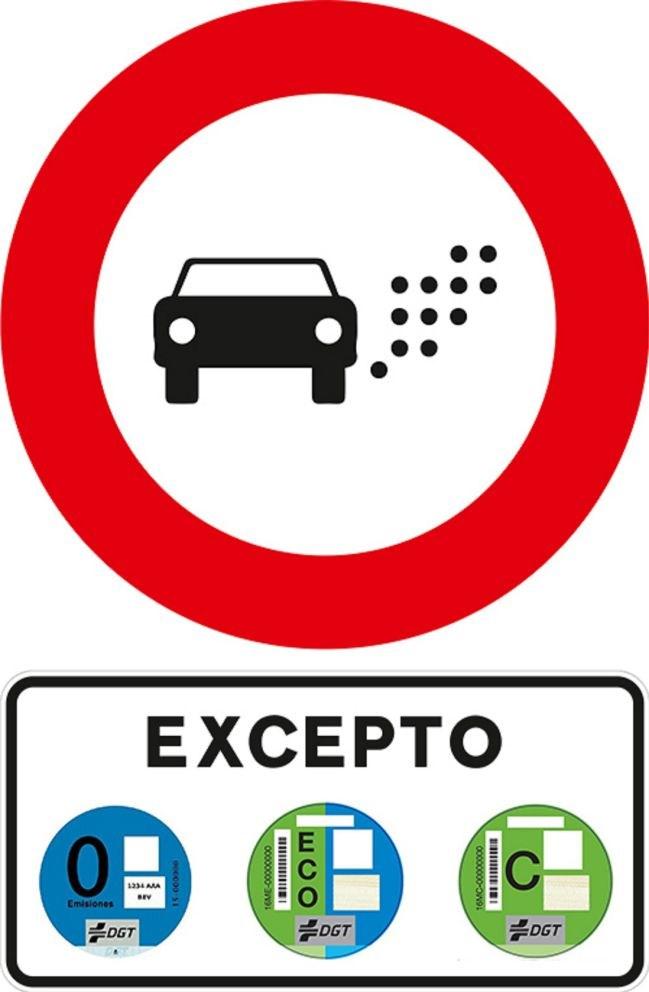
The European Union has imposed new regulations on road safety, which adds a total of 8 ADAS (Advanced Driver Assistance Systems) devices to the current regulations.
Over the last few decades, the European Union has been introducing different regulations in order to improve car safety. This has forced manufacturers to incorporate different security systems.
The regulations came into force on July 6, 2022, and the European Union has decided to introduce an increase in new mandatory safety technologies in all new vehicles launched on the market from July 2024.
The 8ADAS that new cars must have from July 2024:
Fatigue and drowsiness detector (DDR)
This is a device that notifies the driver when it is detected that they have lost concentration behind the wheel, whether due to fatigue, sleep or other causes, as its name indicates. Once it detects little activity behind the wheel, a warning light of a steaming cup appears on the dashboard.
Intelligent speed assist (ISA)
This ADAS is one of the most relevant in terms of road safety. In this case, the car incorporates a camera in the front part of the rearview mirror, so that it reads the traffic signs on the road.
The information reaches a control unit, which will determine whether it is necessary to reduce the speed or not, based on the data obtained through GPS.
Cross traffic alert (RCTA)
This is a system that analyses rear traffic in a transverse direction when reversing, as may occur in a parking lot. Thus, when the presence of either a vehicle, a pedestrian or a bicycle is detected, it emits a sound to warn the driver.
Black box (EDR)
It is a device similar to the one installed on airplanes, which is located under the

driver's seat. Registers a total of more than 15 parameters.
Lane departure warning (LDW)
This system is responsible for controlling the position of the car in the lane, and warns the driver when it involuntarily leaves the lane without using the turn signal.
Emergency braking system (ESS)
It helps detect the exact moment where the vehicle in front of us is performing emergency braking. This avoids a collision and reduces the effect of the range. The warning is carried out through rapidly flashing lights.
New cars that go on the market starting in July will have a starter inhibitor with a breathalyser. It is a device that detects the level of alcohol that the driver has in his or her body through the exhaled air.
However, the European Union has indicated that it will be up to each country to determine the situations in which this system will be mandatory.
This system, as its name indicates, reminds all passengers in the car of the obligation to put on their seat belt. If you travel a certain distance or exceed 25 km/h without the driver wearing the seat belt, the device will emit an acoustic signal that will increase in intensity until the driver fastens it.
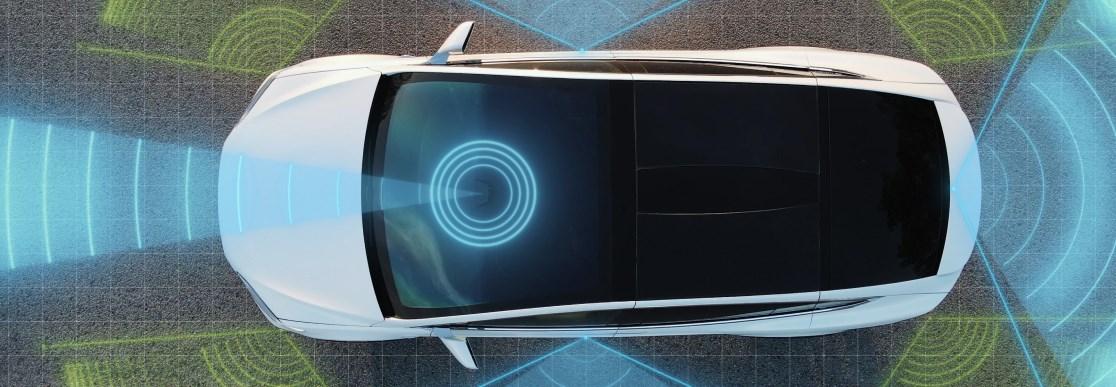


Product recalls issued by vehicle manufacturers, importers or representatives when they detect a factory anomaly will be included for the first time in the Vehicle Registry of the General Directorate of Traffic (DGT). This has just been announced by the DGT with the aim of increasing transparency and information in the purchase and sale operations of used vehicles.
Until now, communication bad generally been done by the traditional postal system, or notices on the manufacturer’s website, but thanks to this new channel in the Vehicle Registry, the means of communication by electronic means increase so that vehicle owners are informed of possible defects.
Any citizen will be able to find out if they have a pending recall through these means: at the time of passing the ITV at an ITV station or through a vehicle report, when requesting information about the status of a vehicle they intend to purchase.
Information on the pending review call will also be provided either through the MiDGT application or an online consultation service at the Electronic Office.
Product recalls are made by vehicle manufacturers, importers, or representatives when they detect a factory anomaly in one of their vehicles, which affects its safety. In that case, it is their obligation to communicate the defect to the owners of the vehicle to proceed with the free repair at their official dealers.
According to the DGT, there is a high degree of commitment from manufacturers to these campaigns since most of them register a correction percentage above 92%, but they are not definitively closed until 100% of affected vehicles are reached.
The most common 'calls for review' are those that affect: the airbag, braking assistance system, engine control software, other types of software (transmission, control centres...), seat belts, pump and/or fuel line. fuel, battery and its conductive elements, coolant, parking brake, and various wiring.
In 2023, vehicle manufacturers, importers or representatives carried out 523 recall campaigns affecting a total of 1.2 million vehicles.

If we rollback to the first automobiles to take to the street, comparing those cars to what we have today, they are almost incomparable. One of the biggest improvements has been the structural integrity that provides a safer environment, but there are still weak spots, and one of those weak spots are a necessity because they are required to allow us to see, the windows.
Although glass technology has also improved tremendously, and vehicle windows are also considerably safer than ever, they are still prone to impacts leading to chips and cracks, both of which can become a bigger problem, and weaken the integrity.
On such impact damage leaves a starshaped mark on the glass, also known as 'chinazo'. If not repaired, this impact can range from a few millimetres to completely breaking the windscreen. Factors such as sudden changes in temperature or potholes can cause the glass to break sooner. For this reason, at the slightest sign of damage, it is advisable to go to a specialist workshop.
Workshops specialised in the repair - or replacement - of windscreens usually carry out this type of work in an average duration of about 30 minutes and the

price of a repair is relatively cheap, compared to a replacement. It is important however to take the advice of the professionals as to the best course of action. Some insurance policies cover
The front windscreen is the only glass surface of the vehicle that can be repaired. In Spain, the General Traffic Regulations (RGC) establish that a windscreen must be repaired if the impact meets the following requirements:
The diameter of the break is not greater than 2.5 cm
Is not in the driver's viewing angle
If there are no more than three different impacts
If the crack is more than 2.5 cm from the edge of the glass
In addition, article 19 of the RGC states that “the glass surface of the vehicle must allow, in all cases, clear visibility for the driver on the road on which it is traveling.”
Article 18 refers to the driver having to “maintain the necessary field of vision.” In this way, having a windshield in poor condition can lead to a fine of up to 200 euro. In the worst case, the vehicle may become immobilised as it poses a serious road safety risk for its occupants and other road users. It must be clarified that even the slightest damage - impact, mark or crack - can be subject to a fine.

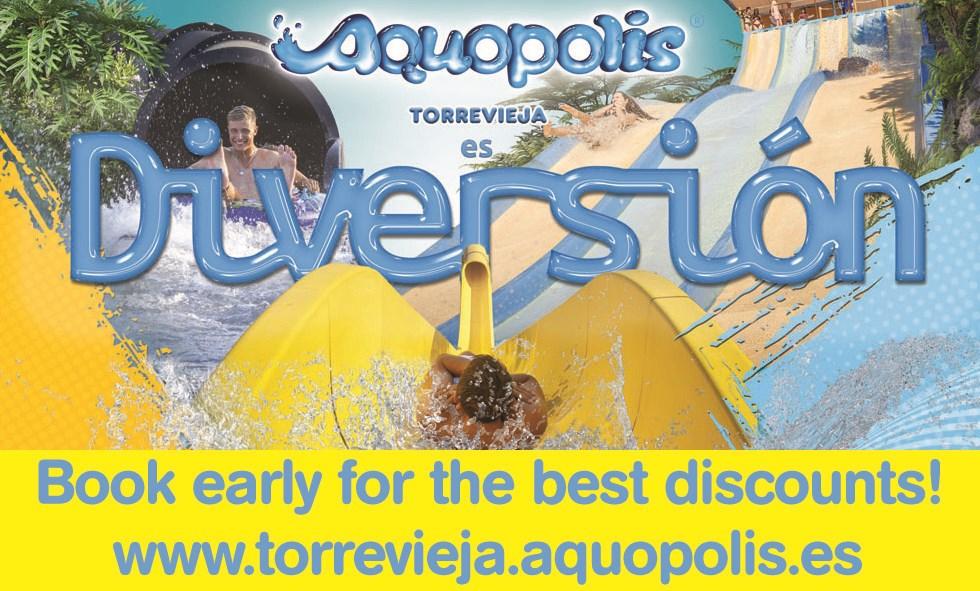
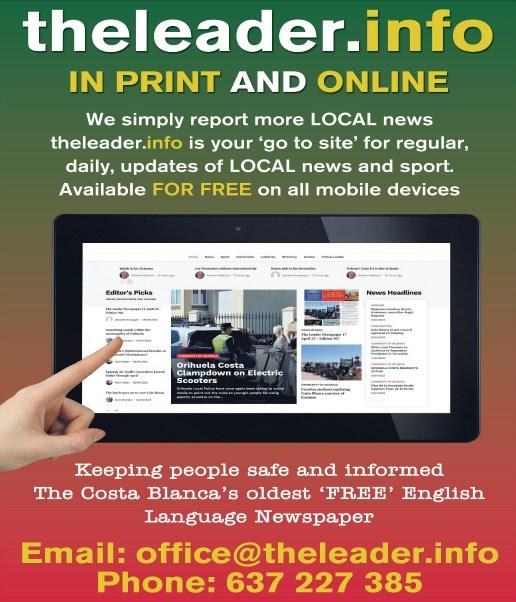

The general director of the General Directorate of Traffic (DGT), Pere Navarro, spoke recently about the challenges of older vehicles in Spain, and clarified that the environmental badge, or eco sticker, will not be reclassified to their detriment.
Navarro recognised the immense effort made by the automobile industry to improve the safety of its vehicles with the progressive incorporation of ADAS (driving aids). The same incident with a vehicle less than 5 years old can save your life, you will emerge unscathed, while with an older vehicle it will have serious consequences. Specifically, the risk of dying or being seriously injured is multiplied by two when comparing incidents that occur with vehicles 10 to 15 years old, in relation to vehicles less than 5 years old. In terms of emissions, there is also a big difference: a recent Euro 6 (label C) emits 60 mg/km of NOx while another one prior to 2001 (Euro 3, label B) emits 2.5 times more.
With the figures for the year 2022, it is clearly observed that the average age of the passenger cars in which those who died in incidents were traveling was 14.8 years in the case of interurban roads and 15.4 on urban roads, while the average age of the circulating fleet of passenger cars was 11.8 years. At the DGT they work on the education and training of drivers to avoid human error, but if this occurs, the driving aids for new vehicles will greatly minimise the consequences.
There has been talk about a possible update to vehicle labelling and its impact on access to Low Emission Zones (ZBE). Navarro stated that updating the current system of environmental labels is one of the tasks that has been studied for some time with several options identified on the table, but still without decided evaluation criteria, due to the disparity in technologies and aspects to be taken into account such as Euro 7 regulations or the future new EU Air Quality Directive.
In any case, there will not be a general reclassification that will cause existing vehicles to lose access rights, but will affect new vehicles more. The change process will have among its priorities a very broad communication strategy with the collaboration of manufacturers and institutions together with the DGT and with an information period of sufficient duration to reduce confusion.



At the cost of 78,650 euro each, the General Directorate of Traffic has purchased 15 new mobile radars, far superior to their predecessors, which themselves are a massive improvement on earlier generation, and are so clever they are being dubbed, “super-radars”.
Tradesegur is once again the company who will provide the equipment, and as a leader in the field, they are no stranger to the Traffic Group of the Guardia Civil, as their equipment can be installed in patrol cars, marked or unmarked, which is where these new radars are destined, or used as mobile devices on a tripod or other fixed structure.
These latest devices are the “most advanced on the market”, and are extremely accurate in detecting speed, although a small margin of error will still be applied, but one of the main novelties of their innovative technology is that the camera allows them to control up to a total of six lanes at a time, and in both directions, and so a single camera can monitor the majority of roads, including motorways, with little effort.
The cameras, according to the manufacturer, are also capable of distinguishing between light and heavy vehicles, which is also extremely useful on roads where speed limits are not only dictated by the type of road, but also by the vehicle driving on that road, as further restrictions do apply in some cases depending on the type of vehicle you are driving.
As is the case for much of the new technology being used today, there is not generally a need for the vehicle to be stopped and dealt with at the scene, unless the violation is excessive, as the process is automatic, the vehicle owner or keeper receiving the notification remotely, and therefore having to pay the corresponding fine, without, perhaps, even being aware they have been caught out until that point.
There will also be an increase in speed monitoring throughout the summer, which will also include locations not normally covered by these devices, according to the director of the General Directorate of Traffic (DGT), Pere Navarro, who is increasingly concerned about the increase in incidents where speed is a factor, and the increase in fatalities and serious injuries, which are going against the overall plan under the “Road to Zero” policy.
Therefore, as well as the usual summer-themed campaigns focussing on the likes of alcohol and drugs, speed checks will be intensified throughout the entire summer period.



A few years ago, the French police published a video on their social media channels, in which a police control was taking place, a checkpoint, and a motorist shared the information publicly so as to warn other of the presence of the police. However, as the story unfolds, we are shown how a child had been kidnapped, and that was the reason for the checkpoint, and although the offending driver got perilously close to being caught, and the girl rescued, because of the timely warning of the presence of the police, the kidnapper was able to avoid the area and continue the terrifying ordeal for the young victim.
The point of the video was to advise everyone, through a potential real-world situation, of one of the reasons why you should never warn anyone of a police control, and moreover, in Spain, you could land yourself in a lot of trouble if you do.
The fact is, whether it be the police or Guardia Civil, any of the security services for that matter, these checkpoints aim to focus the attention on those committing offences, and, as such, if you are doing nothing wrong, you have nothing to worry about. Moreover, for the majority of those law-abiding citizens, you will be sent on your way in the minimal amount of time.
Reporting a police check can be considered among many drivers as a sign of camaraderie and belonging to a group to avoid sanctions. But it is also possible to become an infraction for collaboration in possible crimes and even for using images and personal or professional data of authorities or members of the Security Forces and Corps, which is strictly prohibited.
Sanctions and repercussions are set to get harsher too, as the DGT is already working on ore measures to deal with the sharing of such information, which is often done through WhatsApp and similar applications.
However, action is being taken now, even before these harsher penalties. In Galicia, for example, a company which managed an application where information was shared has been sanctioned. It’s not only companies however, the individual administrator of a WhatsApp group with 15,000 members has also been sanctioned.


So, for the good of your own wallet, never warn of checkpoints, and, more importantly, for the ethic reason that these checkpoints are designed to catch out those who are doing wrong, and whereas a child kidnapping might be an unusual activity, even stopping those who have consumed alcohol or drugs makes the roads safer for all.
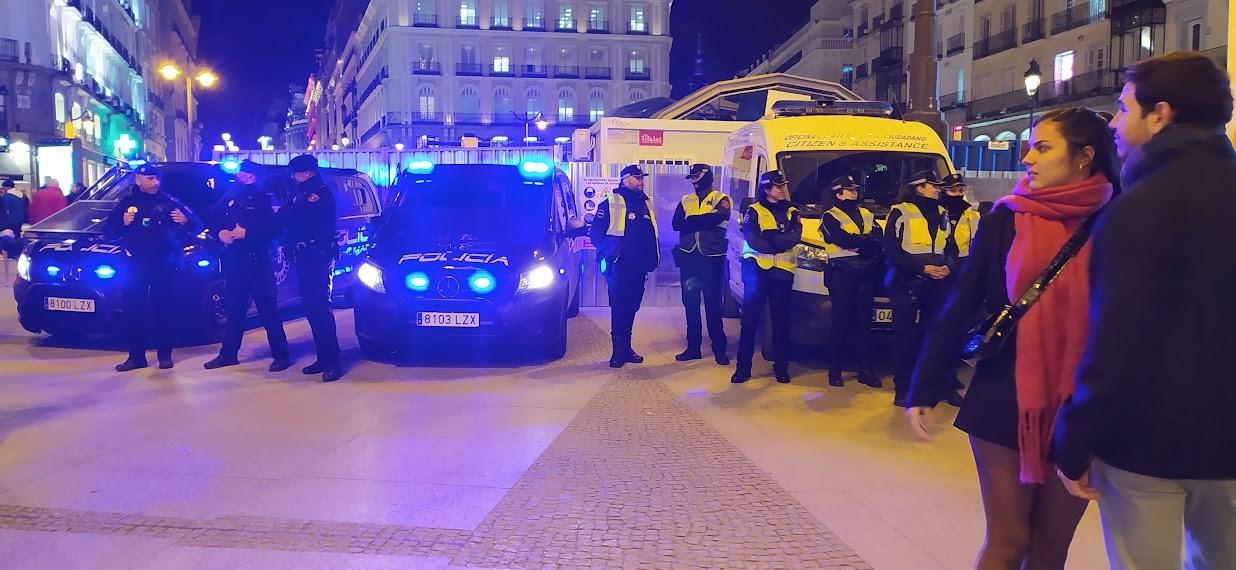
In the previous article we spoke about why you should never warn about checkpoints, and how the DGT are stepping up plans to deal with those who do, but a number of questions have arisen about sharing the information on mobile apps.
The first point we have to make is that if you have a mapping app, Google maps or Tomtom for example, and that app tells you about the location of fixed radar cameras, then that is not a problem. In fact, the DGT wants people to know where fixed speed cameras are located and publish them on their own website, as these cameras are in high-risk areas, and the idea is to promote safer behaviour in the areas where they are located.
The problems surround the awareness or sharing of temporary locations of checks, or checkpoints, that is not permitted.
Regarding the sharing of information via mobile apps, we can look at Galicia as an example, the autonomous community in which, by far, the most use is made of this type of applications, where prosecutions have already been successful.
Regarding the sanctions they are not fines processed based on the Traffic and Road Safety Law but based on the Citizen Security Law.
The exact amount of the fine received by the administrators of the two sanctioned WhatsApp groups so far, based on what is established by the Law and since these are serious infractions, amount to between 601 and 3,000 euro. The final amount is


calculated based on factors such as the damage caused, the profit obtained or the nature of the infringement.
The big question that arises as a result of all of the above is whether any citizen can be sanctioned for the mere fact of being part of a group or apps that warn of the presence of police controls or being a member of the community.
The response from the Guardia Civil is that "they continue to investigate the association and the social media groups" and that, at first, they plan to "go against the administrators", but "later also against those who make the notifications directly”.
As we explained last week, the idea of sanctioning those who share the information is not about the desire to collect fines, but in order to preserve the activities of these checkpoints which could be looking for a dangerous fugitive, a drunk or drugged driver, or the victim of a kidnapping, like the French film we reminded you about last week. Or, one of many other reasons with the single aim of keeping everyone as safe as possible.
"We should not downplay the importance of these warnings, which serve to prevent the Security Forces and Bodies from being able to effectively fight against road crime and also common crime, in the current situation of very specialised and violent crime that uses drug trafficking networks", added the Guardia Civil.
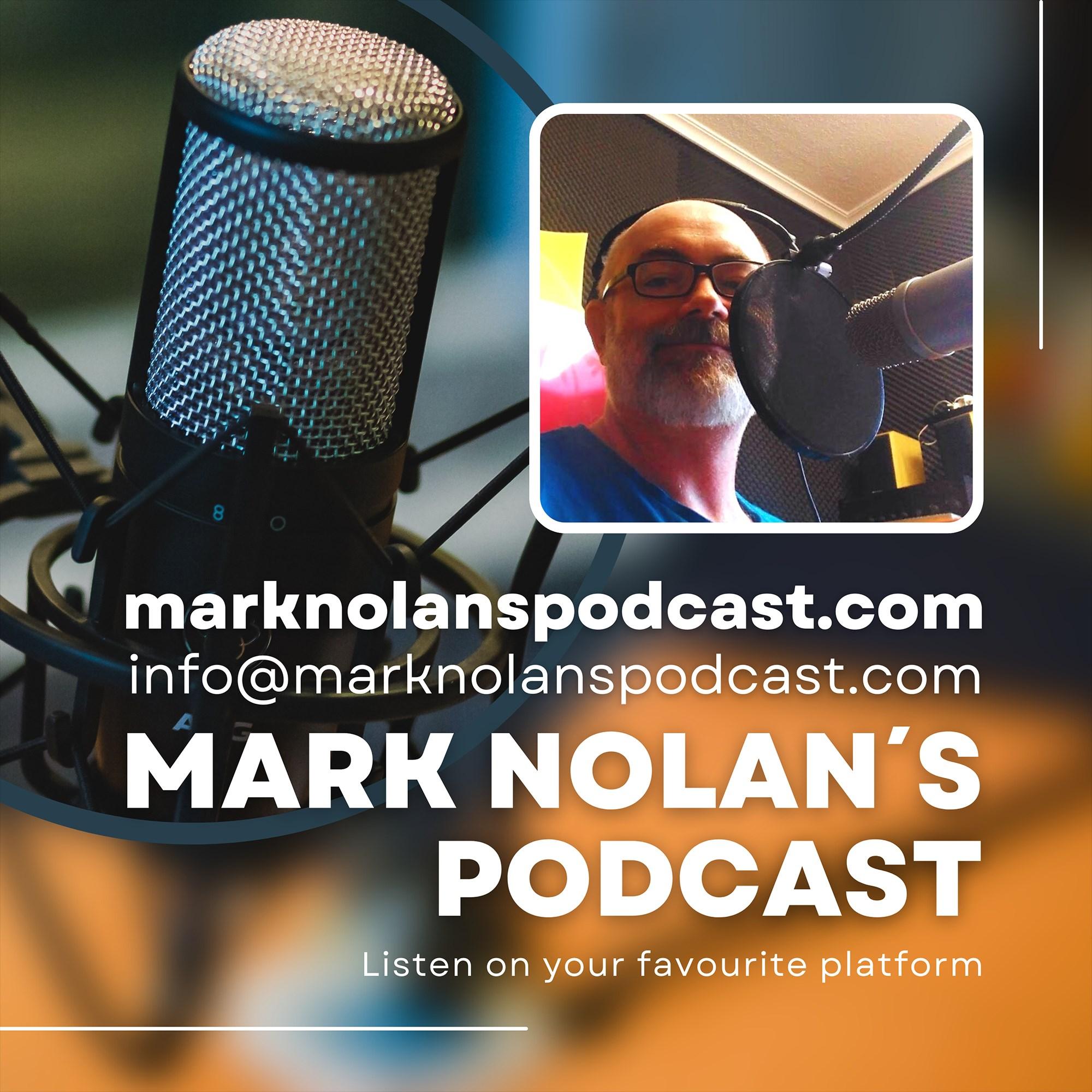


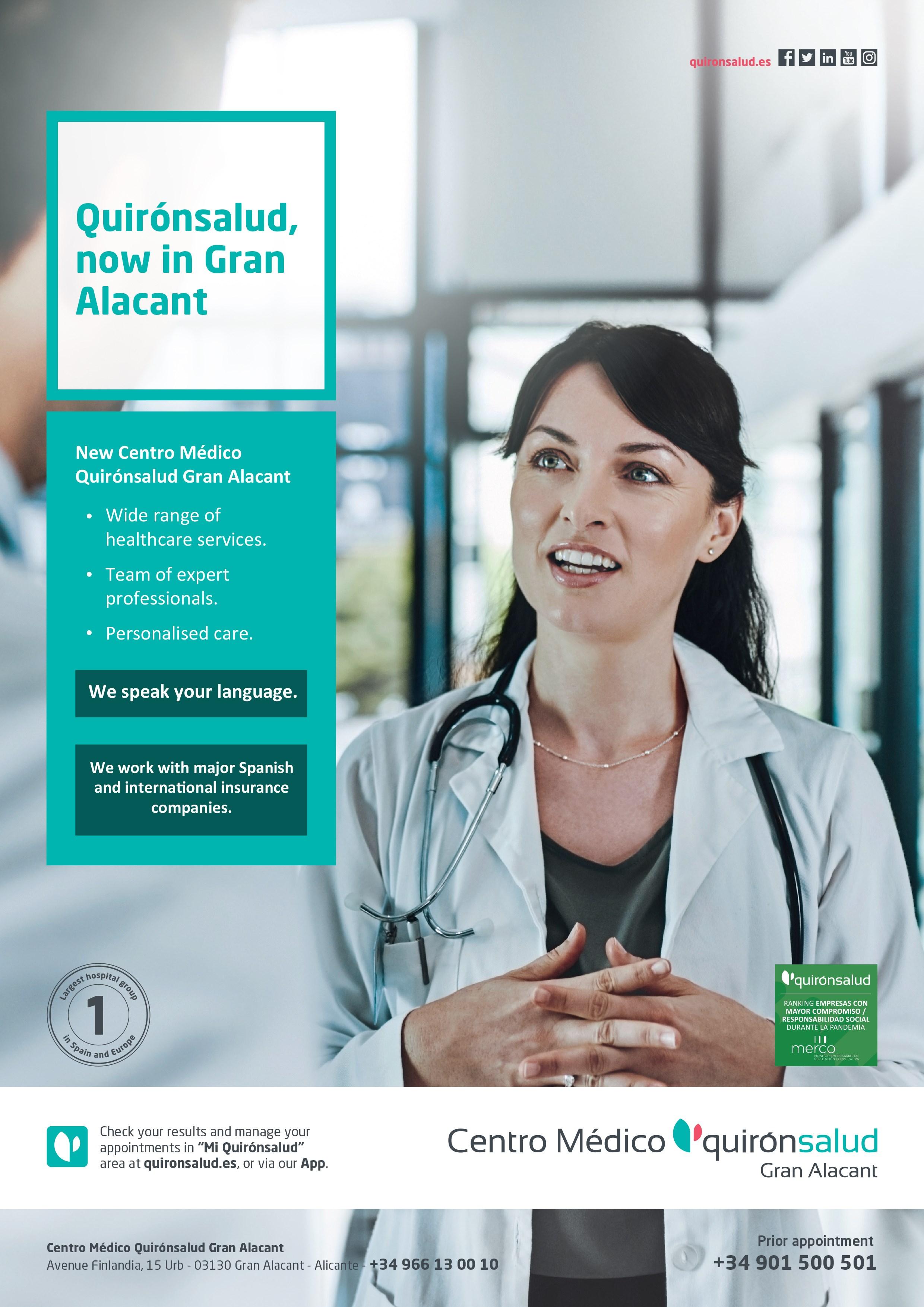


The goal is to offer your patients more precise surgeries, with less postoperative pain and a much faster recovery than the rest of the surgical techniques
The Quirónsalud Torrevieja Hospital has launched the first Advanced Robotic Surgery Unit in the private health sector in the province of Alicante, incorporating the most advanced model of Da Vinci robot. The hospital has extensive experience in robotic surgery, since 15 years ago it was one of the pioneering hospitals in Spain in implementing and training its surgeons in the use of this technology.
The Da Vinci robotic surgical system is designed to offer minimally invasive surgery of the highest level in the approach of complex pathologies in the area of specialties such as Urology, General and Digestive System Surgery, Thoracic Surgery, Oncological Surgery and Gynaecological Surgery.
The robotic surgical system has a camera arm and 3 mechanical arms, and surgical instruments mounted on them that are controlled by the surgeon while sitting in front of a computer console within the operating room itself.
The system also has a vision tower that processes the image, providing a real, magnified and 3D view of the surgical field that allows the surgeon to perform more complex procedures with greater precision, flexibility and control compared to conventional techniques.
As Dr. Rosa Mª Cañón, medical director of the Quirónsalud Torrevieja Hospital, points out, "the incorporation of the Da Vinci robotic system represents a great qualitative advance in the hospital's surgical services, thanks to which we can offer the best quality of care and experience to our patients, who will benefit from less invasive surgeries with less risk of side effects such as infection, minimal scarring and shorter admissions".
Thanks to the Da Vinci robotic surgery system, Quirónsalud Torrevieja Hospital offers the best treatment and results for patients with prostate cancer who require a radical prostatectomy. "To perform it," explains Dr. Sven Petry, head of the Urology Service at the Quirónsalud Torrevieja Hospital, "only small incisions in the skin of 0.5 to 1 cm in length are necessary through which we can perform, guided by the high-definition camera, the complete removal of the prostate with an optimal level of precision."
Regarding the many advantages offered by robotic urological surgery, Dr. Sven Petry highlights a greater recovery of urinary continence, whose success rates thanks to the robot reach 97% compared to 88%, as well as a complete recovery from erectile dysfunction of traditional surgery. Another benefit is the rapid recovery of the patient who, after discharge, can lead a completely normal life, four weeks after the intervention.

The specialist in urological robotic surgery at Hospital Quirónsalud Torrevieja also recommends this technique for the treatment of bladder cancer, kidney cancer or genital prolapse due to its excellent results and postoperative advantages.
The Da Vinci robotic surgery system has proven to be the best instrument for the multidisciplinary treatment of benign or malignant pathologies. These surgeries include hepatobiliary surgery, oesophageal-gastric surgery, colorectal surgery, metabolic surgery for obesity and abdominal wall surgery.
Within this section of robotic surgery, Dr. Pedro Bretcha, head of the General Surgery and Digestive System Service at Quirónsalud Torrevieja Hospital, highlights the results achieved by this technique in the treatment of colorectal cancer. As Dr. Bretcha explains, "thanks to robotic surgery in the treatment of colorectal cancer, we can perform a much more precise resection of the tumour while maintaining the principles of proper cancer surgery and preserving the surrounding healthy tissue. In addition to achieving less blood loss, a lower risk of infections due to the small size of the incisions made, as well as less postoperative pain, a shorter hospital stay and a quick return to daily activities."
Learn more about robotic oncology surgery in this video:
Better preservation of pelvic structures thanks to robotic surgery
Another area in which robotic surgery has proven to be the best ally is in the surgical treatment of gynaecological pathologies such as hysterectomy, myomectomy, endometriosis or genital prolapse, in which it stands out "for facilitating more precious movements in narrow and delicate areas such as those that make up the female sexual and reproductive system". says Dr. Rodolfo Martín Díaz, head of the Gynaecology Service at Quirónsalud Torrevieja Hospital. The benefits of gynaecologic robotic surgery include, but are not limited to, better preservation of pelvic structures, a very significant improvement in urinary incontinence and bowel and bladder control, as well as a much earlier return to daily activities.
Thoracic surgeries with less hospitalisation thanks to the Da Vinci
Thanks to the minimally invasive approach assisted with Da Vinci robotic surgery, interventions that previously required long hospitalisations for patients with pulmonary pathology can be performed on an almost outpatient basis, with hospital discharge in just 48 hours. "In addition," says Dr. José Belda, head of the Thoracic Surgery Service at Quirónsalud Torrevieja, "the great precision of the Da Vinci's interventions allows the treatment of benign and malignant pulmonary pathologies such as lung cancer, including lobectomies and sublobar resections, all without any detriment to oncological radicality". Other advantages pointed out by the Quirónsalud Torrevieja specialist are less blood loss and a lower risk of postoperative infections.



